
The transition towards clean energy in combination with a shortfall in supply has seen the price of raw uranium, also known as ‘yellowcake’, rise almost 60 per cent in recent weeks. It is now trading at over $50 a pound – a nine-year high. The market has been described as being at a ‘tipping point’. Given the recent boom in the market, the current conditions could tip the balance towards an era of rising uranium prices.
What is uranium?
Uranium is a heavy metal which has been used as a source of concentrated energy for over 60 years. Uranium ore can be mined from underground, milled, and then sold. It is then used in a nuclear reactor for electricity generation. About 10% of the world’s electricity is generated from uranium in nuclear reactors. There are some 445 nuclear reactors operating in 32 countries. It is the most energy-dense and efficient fuel source we have, with just ten uranium pellets able to power the average household for an entire year.
In March 2011, Japan’s most powerful earthquake on record triggered a tsunami, which then caused a meltdown at a nuclear power plant in Fukushima. It forced residents from their homes as radiation leaked from the plant. Since the Fukushima accident, uranium prices had been on a downtrend trend – enough to force several miners to suspend or scale back operations.
However, there has been a 42 per cent increase in the price of the metal in the first nine months of 2021 alone.
Demand for uranium
Since launching in July, a new investment trust, run by Canadian asset manager Sprott, has snapped up about 6m pounds of physical uranium, worth about $240m. This aggressive buying has helped push prices of uranium to more than $40 per pound, up from $30 at the start of the year. In the first part of September alone, prices surged by around 40%, outperforming all other major commodities. In just a few weeks, millions of pounds of supply were scooped up by the Sprott Physical Uranium Trust. This puts pressure on utilities that need to secure supplies of the commodity for electricity generation.
This increased demand is occurring at precisely the same time as countries and companies around the world are committing to net-zero carbon targets. As a result, nuclear power companies are now facing competition for supplies of uranium from financial investors, who are betting on sharply higher prices and demand for the radioactive material used to fuel reactors. This boost in demand is said to be due to uranium being used as a low-carbon energy source, despite the radioactive waste problem that comes with it. Investors are betting that nuclear power will be a key part of the move away from fossil fuels.
Production from world uranium mines has in recent years supplied 90% of the requirements of power utilities for uranium, with the current global mine supply expected to be about 125m pounds for 2021. In addition, there are secondary sources such as commercial and military stockpiles. However, according to the World Nuclear Association, demand for uranium is expected to climb from about 162m pounds this year to 206m pounds in 2030, and to 292m pounds by 2040. This is largely driven by increased power generation in China. China is planning a big increase in its nuclear power capacity over the next decade as the country seeks to cut its emissions.
Supply of uranium
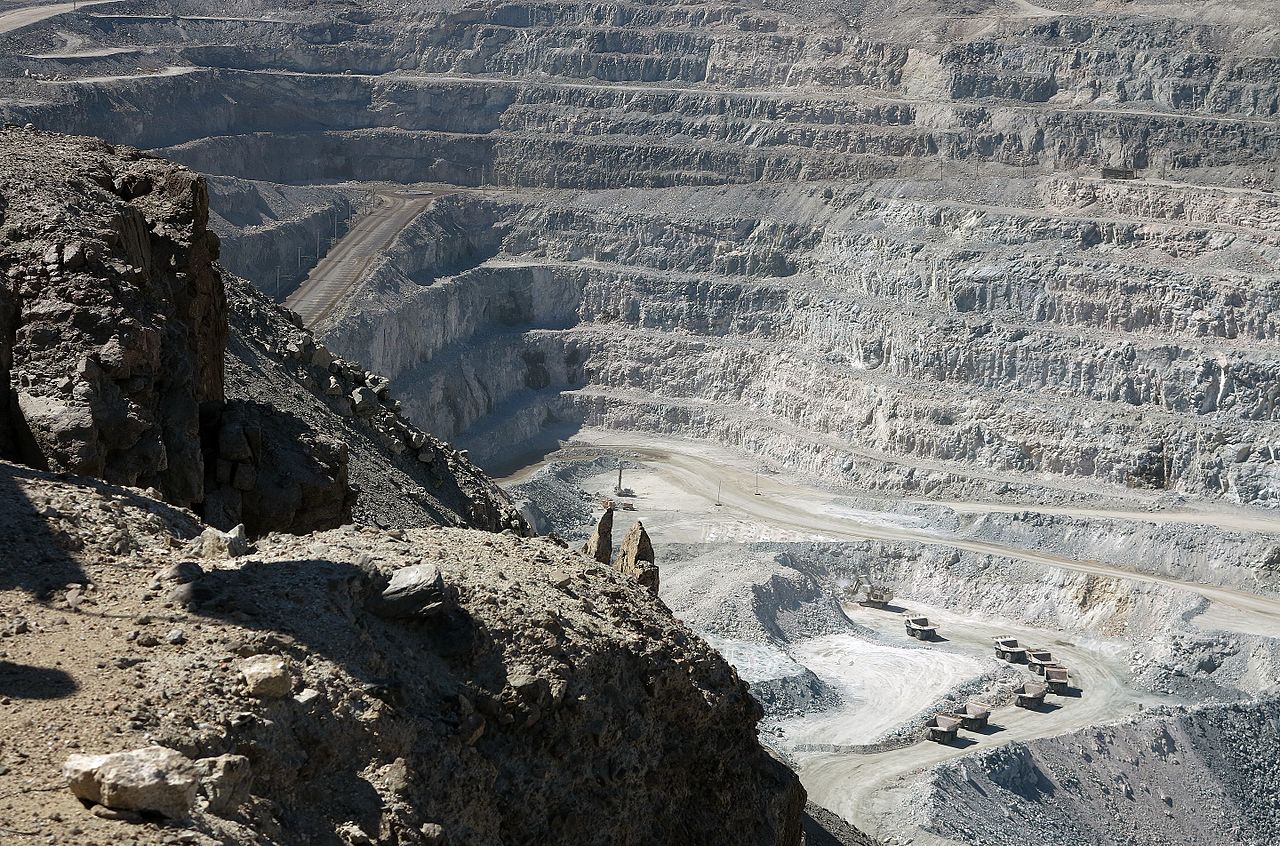 Although uranium is relatively abundant in the Earth’s crust, not all uranium deposits are economically recoverable. While some countries have uranium resources that can be mined profitably when prices are low, others do not. Kazakhstan is the largest producer of uranium and in 2019 produced more uranium than the second, third, and fourth-largest producers combined.
Although uranium is relatively abundant in the Earth’s crust, not all uranium deposits are economically recoverable. While some countries have uranium resources that can be mined profitably when prices are low, others do not. Kazakhstan is the largest producer of uranium and in 2019 produced more uranium than the second, third, and fourth-largest producers combined.
The big issue is that supply to the market is falling significantly. For deliveries that would start in 2022, Kazakh producer, Kazatomprom, is now discussing the possibility of supplying the metal directly to Sprott. However, it also warned of the risk that its mines would not reach their output target for 2021, and it said earlier this year that it would keep its production at reduced levels through 2023. In addition to this, the recent surge in buying is also reducing the inventories that accumulated after the Fukushima accident.
The supply of uranium is set to fall 15 per cent by 2025 and by 50 per cent by 2030. This is mainly due to a lack of investment in new mines. The lack of new uranium mines will mean the price has to move higher. Namibian mines, accounting for 8 per cent of world supply, are approaching the end of their lives. Cameco of Canada, another important source, has shut one large pit because of uneconomic prices. According to BMO Capital, a mine supply deficit since 2019 will continue.
Supply has also been affected by the pandemic. The boom in demand has coincided with historically low prices and pandemic-driven mine disruptions, prompting uranium producers to buy from the spot market to fulfil long-term contracts with consumers. Some of the largest mining operations in Canada and Kazakhstan had to suspend production temporarily due to a shortage of workers.
Adding to the security of supply concerns is the role of commercial and state-owned entities in the uranium market. Uranium is a highly trade-dependent commodity with international trade policies highlighting the disconnect between where uranium is produced and where it is consumed. About 80% of primary production comes from countries that consume little-to-no uranium, and nearly 90% of uranium consumption occurs in countries that have little-to-no primary production. As a result, government-driven trade policies can be particularly disruptive for the uranium market. It is argued that the risk to uranium supply may create a renewed focus on ensuring availability of long-term supply to fuel nuclear reactors.
The role of financial players
Financial players have been accelerating the recent recovery in the price of uranium, with large-scale speculative buying and withholding of supply. But it can be argued that this would not have occurred if there were not a fundamental and substantial shortage.
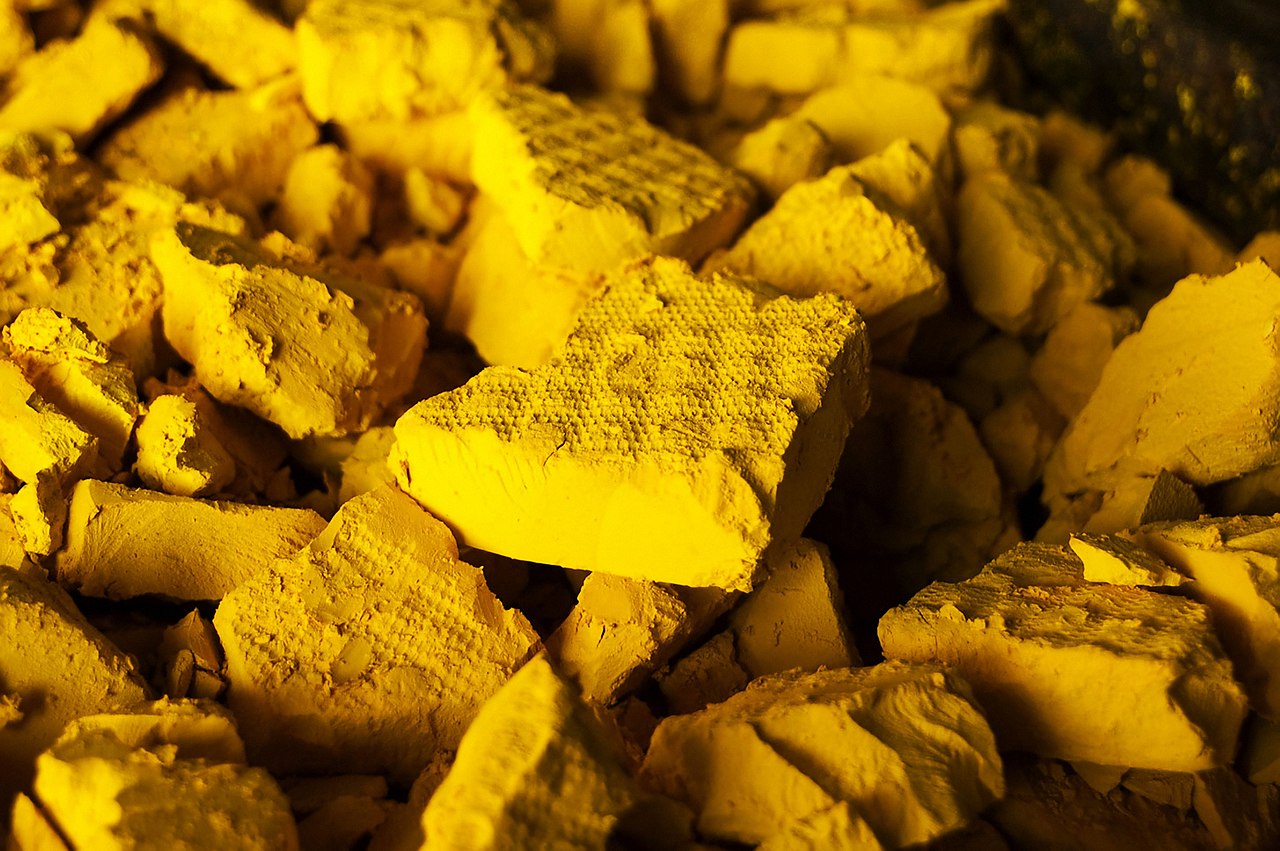 If investors keep buying uranium, analysts expect utility companies will come under pressure to replace long-term supply agreements before they expire. At the moment, long-term contracts cover 98 per cent of the uranium needed by US utility companies. But that figure drops to 84 per cent next year, and 55 per cent by 2025, according to uranium investment company, Yellow Cake.
If investors keep buying uranium, analysts expect utility companies will come under pressure to replace long-term supply agreements before they expire. At the moment, long-term contracts cover 98 per cent of the uranium needed by US utility companies. But that figure drops to 84 per cent next year, and 55 per cent by 2025, according to uranium investment company, Yellow Cake.
As annual supply declines, demand for uranium from producers and financial players increases, and with trade policy potentially restricting access to some markets, it is believed the pounds available in the spot market will not be adequate to satisfy the growing backlog of long-term demand. As a result, companies expect there will be increased competition to secure uranium under long-term contracts on terms that will ensure the availability of reliable primary supply to meet growing demand.
What will the future look like?
Many countries are turning their attention to nuclear power in order to become net-zero economies. Even in Japan, nuclear generation has slowly been returning. It is argued that nuclear power is needed to some degree for the country to achieve its pollution-curbing goals. However, not all nations are re-embracing nuclear. Germany, for example, is set to shut its last reactor next year.
The concern is whether the recent gains in investor demand is enough to underpin the market. It can be argued that even before the recent price rally started, demand for uranium from the investment sector was already growing. However, observers of the market have suggested that just as quickly as uranium skyrocketed, prices may now be hitting the brakes. Producer stocks that got swept up in the frenzy seem to have peaked. In addition, the world’s top uranium miner Kazatomprom has warned that the recent price action was being fuelled by financial investors rather than the utilities that use the radioactive metal as fuel in their reactors. On the other hand, it is argued that this pickup in the spot market will be the catalyst to push more utilities to get involved in term contracting.
Despite the impact of the pandemic on global energy demand, it is now growing again. Gas and other energy shortages are being seen and the price of gas has been rising rapidly. This rise in energy prices plus a focus on carbon-free generation is likely to continue driving demand for nuclear power and hence for uranium. In addition, producers have warned of supply shortages in the long term as investors scoop up physical inventory and new mines are not starting quickly enough. Thus nuclear’s growing role in the clean energy transition, in addition to a supply shortfall, could turn the tide for the uranium industry.
Articles
Data
Questions
- Using the uranium market as an example, describe the relationship between an increase in demand and the market price.
- Explain whether the supply of uranium would be price elastic or inelastic in (a) the short run; (b) the long run.
- What is the role of speculation in determining the recent movements in the price of uranium and likely future price movements?
- Given your answers to the above questions, draw supply and demand diagrams to illustrate (a) the recent increase in the market price of uranium; (b) the likely price of uranium in five years from now.
 Share prices are determined by demand and supply. The same applies to stock market indices, such as the FTSE 100 and FTSE 250 in the UK and the Dow Jones Industrial Average and the S&P 500 in the USA. After all, the indices are the weighted average prices of the shares included in the index. Generally, when economies are performing well, or are expected to do so, share prices will rise. They are likely to fall in a recession or if a recession is anticipated. A main reason for this is that the dividends paid on shares will reflect the profitability of firms, which tends to rise in times of a buoyant economy.
Share prices are determined by demand and supply. The same applies to stock market indices, such as the FTSE 100 and FTSE 250 in the UK and the Dow Jones Industrial Average and the S&P 500 in the USA. After all, the indices are the weighted average prices of the shares included in the index. Generally, when economies are performing well, or are expected to do so, share prices will rise. They are likely to fall in a recession or if a recession is anticipated. A main reason for this is that the dividends paid on shares will reflect the profitability of firms, which tends to rise in times of a buoyant economy.
When it first became clear that Covid-19 would become a pandemic and as countries began locking down, so stock markets plummeted. People anticipated that many businesses would fail and that the likely recession would cause profits of many other surviving firms to decline rapidly. People sold shares.
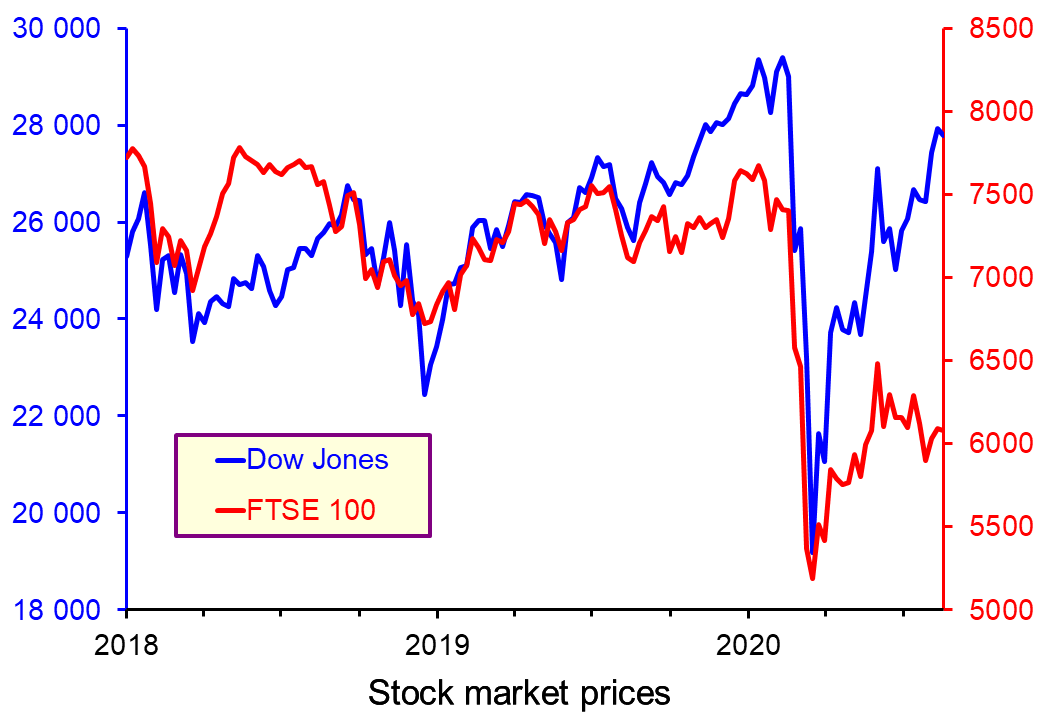 The first chart shows how the FTSE 100 fell from 7466 in early February 2020 to 5190 in late March, a fall of 30.5%. The Dow Jones fell by 34% over the same period. In both cases the fall was driven not only by the decline in the respective economy over the period, but by speculation that further declines were to come (click here for a PowerPoint of the chart).
The first chart shows how the FTSE 100 fell from 7466 in early February 2020 to 5190 in late March, a fall of 30.5%. The Dow Jones fell by 34% over the same period. In both cases the fall was driven not only by the decline in the respective economy over the period, but by speculation that further declines were to come (click here for a PowerPoint of the chart).
But then stock markets started rising again, especially the Dow Jones, despite the fact that the recessions in the UK, the USA and other countries were gathering pace. In the second quarter of 2020, the Dow Jones rose by 23% and yet the US economy declined by 33% – the biggest quarterly decline on record. How could this be explained by supply and demand?
Quantitative easing
In order to boost aggregate demand and reduce the size of the recession, central banks around the world engaged in large-scale quantitative easing. 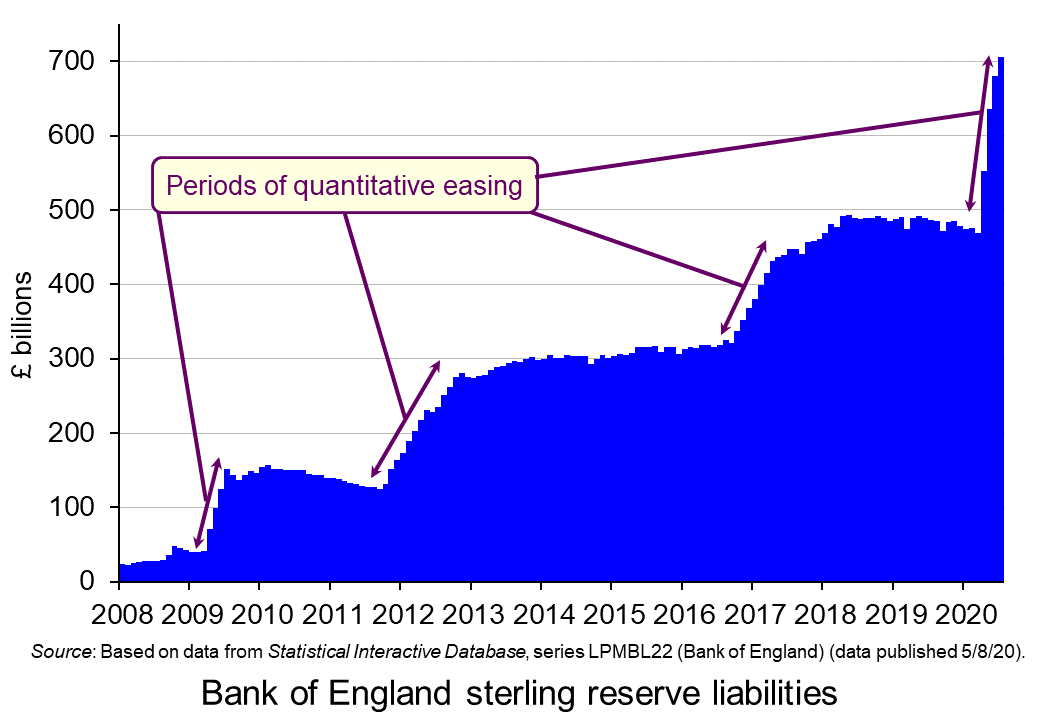 This involves central banks buying government bonds and possibly corporate bonds too with newly created money. The extra money is then used to purchase other assets, such as stocks and shares and property, or physical capital or goods and services. The second chart shows that quantitative easing by the Bank of England increased the Bank’s asset holding from April to July 2020 by 50%, from £469bn to £705bn (click here for a PowerPoint of the chart).
This involves central banks buying government bonds and possibly corporate bonds too with newly created money. The extra money is then used to purchase other assets, such as stocks and shares and property, or physical capital or goods and services. The second chart shows that quantitative easing by the Bank of England increased the Bank’s asset holding from April to July 2020 by 50%, from £469bn to £705bn (click here for a PowerPoint of the chart).
But given the general pessimism about the state of the global economy, employment and personal finances, there was little feed-through into consumption and investment. Instead, most of the extra money was used to buy assets. This gave a huge boost to stock markets. Stock market movements were thus out of line with movements in GDP.
Confidence
Stock market prices do not just reflect the current economic and financial situation, but also what people anticipate the situation to be in the future. 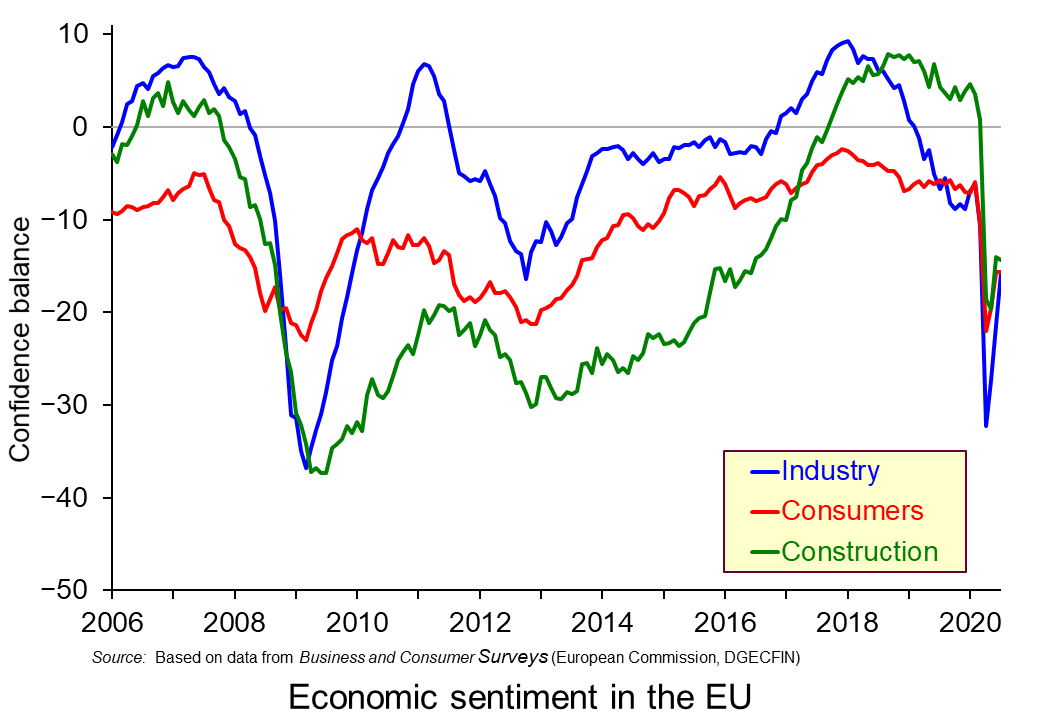 As infection and death rates from Covid-19 waned around Europe and in many other countries, so consumer and business confidence rose. This is illustrated in the third chart, which shows industrial, consumer and construction confidence indicators in the EU. As you can see, after falling sharply as the pandemic took hold in early 2020 and countries were locked down, confidence then rose (click here for a PowerPoint of the chart).
As infection and death rates from Covid-19 waned around Europe and in many other countries, so consumer and business confidence rose. This is illustrated in the third chart, which shows industrial, consumer and construction confidence indicators in the EU. As you can see, after falling sharply as the pandemic took hold in early 2020 and countries were locked down, confidence then rose (click here for a PowerPoint of the chart).
But, as infection rates have risen somewhat in many countries and continue to soar in the USA, Brazil, India and some other countries, this confidence may well start to fall again and this could impact on stock markets.
Speculation
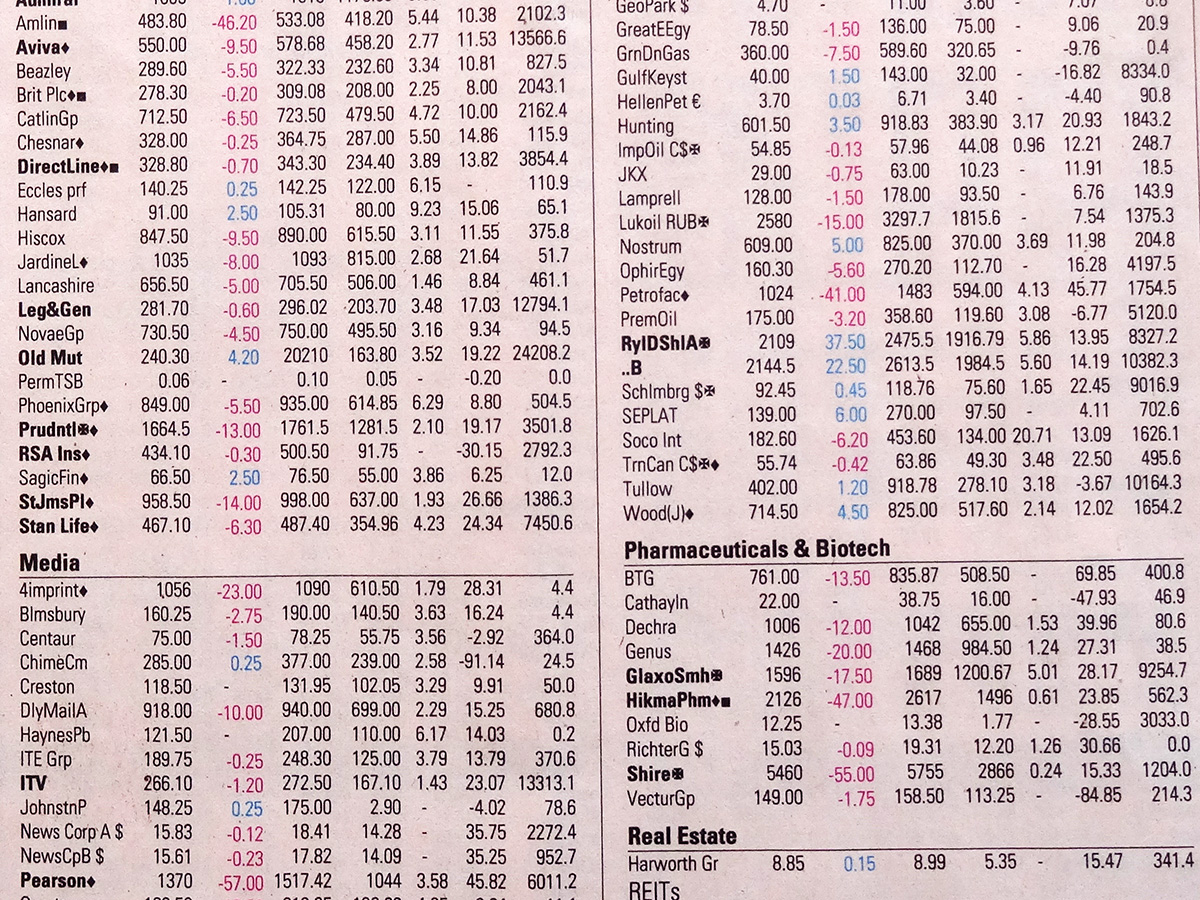 A final, but related, cause of recent stock market movements is speculation. If people see share prices falling and believe that they are likely to fall further, then they will sell shares and hold cash or safer assets instead. This will amplify the fall and encourage further speculation. If, however, they see share prices rising and believe that they will continue to do so, they are likely to want to buy shares, hoping to make a gain by buying them relatively cheaply. This will amplify the rise and, again, encourage further speculation.
A final, but related, cause of recent stock market movements is speculation. If people see share prices falling and believe that they are likely to fall further, then they will sell shares and hold cash or safer assets instead. This will amplify the fall and encourage further speculation. If, however, they see share prices rising and believe that they will continue to do so, they are likely to want to buy shares, hoping to make a gain by buying them relatively cheaply. This will amplify the rise and, again, encourage further speculation.
If there is a second wave of the pandemic, then stock markets could well fall again, as they could if speculators think that share prices have overshot the levels that reflect the economic and financial situation. But then there may be even further quantitative easing.
There are many uncertainties, both with the pandemic and with governments’ policy responses. These make forecasting stock market movements very difficult. Large gains or large losses could await people speculating on what will happen to share prices.
Articles
Questions
- Illustrate the recent movements of stock markets using demand and supply diagrams. Explain your diagrams.
- What determines the price elasticity of demand for shares?
- Distinguish between stabilising and destabilising speculation. How are the concepts relevant to the recent history of stock market movements?
- Explain how quantitative easing works to increase (a) asset prices; (b) aggregate demand.
- What is the difference between quantitative easing as currently conducted by central banks and ‘helicopter money‘?
- Give some examples of companies whose share prices have risen strongly since March 2020. Explain why these particular shares have done so well.
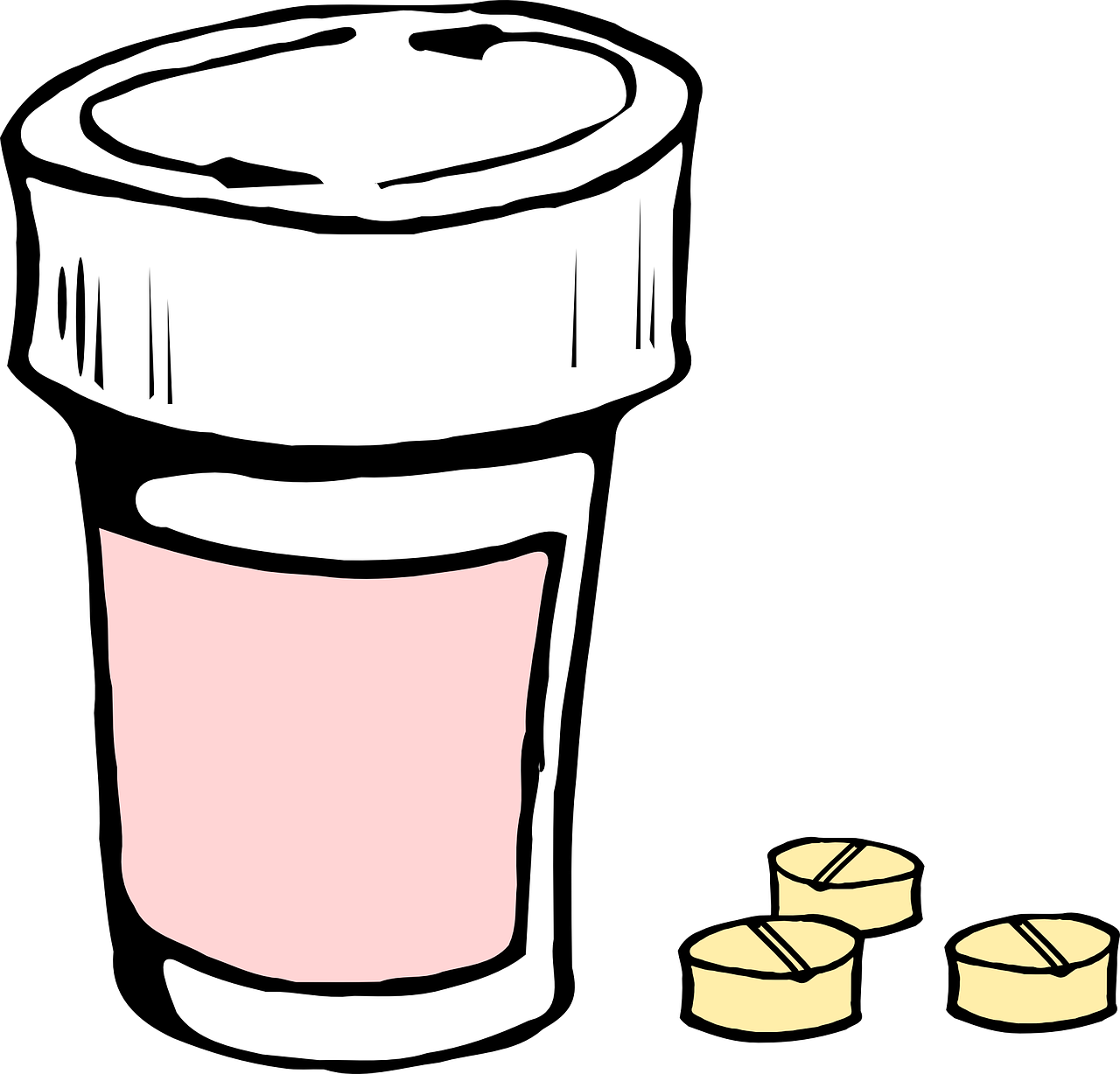 One type of market failing is the asymmetric information between producers and consumers. Advertising, branding and marketing can either help to reduce consumers’ limited information or play on ignorance to mislead consumers.
One type of market failing is the asymmetric information between producers and consumers. Advertising, branding and marketing can either help to reduce consumers’ limited information or play on ignorance to mislead consumers.
Misleading consumers is what the pharmaceutical company Reckitt Benckiser is accused of doing with its Nurofen brand of painkillers. There are very few types of painkiller – the most common three being paracetamol, ibuprofen and aspirin. These are sold cheaply in chemists as unbranded ‘generic products’. Or you can buy much more expensive branded versions of the same drugs. Many people believe that the branded versions are more effective as they are cleverly marketed.
Reckitt Benckiser has been found guilty by the Australian federal court of deceiving consumers. The company produces various varieties of Nurofen, each claiming to target a particular type of pain. But Nurofen Back Pain, Nurofen Period Pain, Nurofen Migraine Pain and Nurofen Tension Headache are in fact identical! And in many outlets, they were sold at different prices – a form of price discrimination reflecting the strength of demand by consumers for a particular type of pain relief.
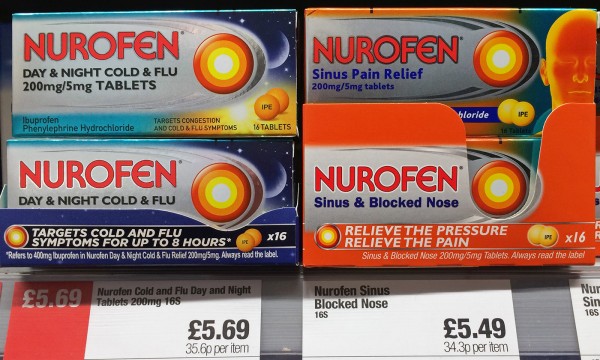 And now the UK Advertising Standards Authority is investigating the company over whether its adverts for Nurofen Express are misleading by stating that the product ‘gives you faster headache relief than standard paracetamol or ibuprofen’. Also it is investigating the company’s claim that its products directly target muscles in the head. Both Nurofen Migraine Pain and Nurofen Tension Headache claim on the front of the box to provide ‘targeted rapid relief’.
And now the UK Advertising Standards Authority is investigating the company over whether its adverts for Nurofen Express are misleading by stating that the product ‘gives you faster headache relief than standard paracetamol or ibuprofen’. Also it is investigating the company’s claim that its products directly target muscles in the head. Both Nurofen Migraine Pain and Nurofen Tension Headache claim on the front of the box to provide ‘targeted rapid relief’.
The company adopts similar practices in its combined pain-killer and decongestant drugs for relieving cold symptoms. For example, its Nurofen Cold and Flu Relief, Nurofen Day and Night Cold and Flu, Nurofen Sinus and Blocked Nose and Nurofen Sinus Pain Relief all contain the same quantities of ibuprofen and the decongestant phenylephrine hydrochloride, but each claims to do something different.
So there are various issues here. The first is whether excessive profits are made by charging a price typically 3 to 4 times greater than the identical generic version of the drug; the second is whether the company deliberately misleads consumers by claiming that a particular version of the drug targets a particular type of pain; the third is whether ‘faster acting’ versions are significantly different; the fourth is whether price discrimination is being practised.
Articles
Nurofen maker Reckitt Benckiser suffers advertising headaches Financial Times, Robert Cookson and Scheherazade Daneshkhu (15/12/15)
Nurofen Express advertising claims probed by UK watchdog BBC News (15/12/15)
ASA probing ‘misleading’ painkiller claims in advert by drug firm behind Nurofen The Telegraph, Tom Morgan and agency (15/12/15)
The great painkiller con: Top drug brands accused of huge mark-ups and misleading claims Mail Online, Sean Poulter and John Naish (16/12/15)
Nurofen Under Investigation By UK Watchdog Over Claims Advert ‘Misled’ Customers Huffington Post, Natasha Hinde (15/12/15)
Australian Competition & Consumer Comission media release
Court finds Nurofen made misleading Specific Pain claims ACCC (14/12/15)
Questions
- Is price discrimination always against the consumer’s interests?
- What form of price discrimination is being practised in the case of Nurofen?
- How, do you think, does Reckitt Benckiser decide the prices it charges retailers for its pain killers and how, do you think, do retailers determine the price they charge consumers for them?
- Is it a reasonable assumption that branded products in most cases are better than own-brand or generic versions? How is behavioural theory relevant here?
- If Reckitt Benckiser were banned from using the word ‘targets’ when referring to one of its product’s effect on particular type of pain, could the company instead use the words ‘suitable for’ relieving a particular type of pain and thereby avoid misleading consumers?
- What is the best way of improving consumer knowledge about particular types of over-the-counter drugs and their effects on the body?
- Comment on the following statement by Dr Aomesh Bhatt, the company’s medical affairs director: ‘The Nurofen specific-pain range was launched with an intention to help consumers navigate their pain relief options, particularly within the grocery environment where there is no healthcare professional to assist decision making.’
 A bumper olive crop in Spain would seem to be good news for Spanish olive growers. But the effect has been a fall in the prices of olives and olive oil. With 43% of the global supply, Spain is the world’s largest olive oil producer and changes in Spanish output have a big effect on the world price.
A bumper olive crop in Spain would seem to be good news for Spanish olive growers. But the effect has been a fall in the prices of olives and olive oil. With 43% of the global supply, Spain is the world’s largest olive oil producer and changes in Spanish output have a big effect on the world price.
Premium extra virgin olive oil has fallen to its lowest level (even in nominal terms) since 2002. Today the price is around $2900 (£1850) a tonne in the wholesale market; in May 2006 it peaked at nearly $5854 – double today’s price.
And while this is bad news for Spanish farmers, for farmers in countries without bumper harvests, the low prices are even harder to bear.
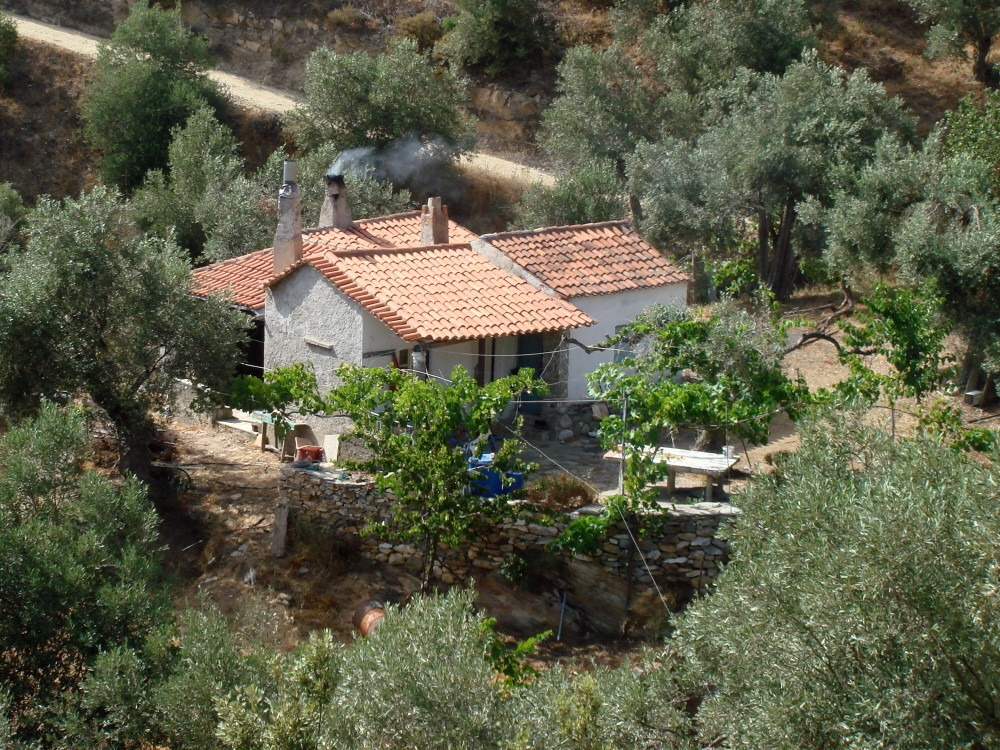
The problem is being exacerbated by a fall in demand in many countries currently suffering recession, such as Greece, Portugal and Italy – all big olive oil consumers. Although olive oil prices have fallen, it is still more expensive than various substitutes. Many people are thus buying these cheaper alternatives, such as sunflower oil, especially for cooking.
What is more, cheaper substitutes for olive oil are increasing in supply. Take the case of rape seed oil in the UK. As the Mail Online article, linked to below, reports:
“UK rape planting is thought to have hit an all-time high this year as British farmers take advantage of the high prices being demanded for rapeseed – base ingredient of many vegetable oils and other edible oils.
Much of the UK crop is used by the local food industry, although some analysts are predicting strong UK yields will give farmers the opportunity to export more to Europe. Because of rising export demand, oil users in the UK claim there is little to indicate the price they are paying for rapeseed oil will drop substantially in the near future.”
The market for olive oil is global. Crop yields in one part of the world, both of olives and of substitute crops, affect global prices and hence growers’ incomes worldwide.
Webcast
 Debt hit countries suffer from olive oil price dip Euronews (28/5/12)
Debt hit countries suffer from olive oil price dip Euronews (28/5/12)
News articles
Olive oil price slides as glut hits southern Europe Gulf News, Javier Blas (29/5/12)
Farmers feel squeeze as olive oil price slips The National, Gregor Stuart Hunter (29/5/12)
Olive oil surplus adds to economic pain in Spain The Week (29/5/12)
Olive oil price fall brings further pain for Spain, Italy and Greece The Telegraph (28/5/12)
Pass notes No 3183: Olive oil Guardian (28/5/12)
More Storage Aid for Virgin Olive Oil Olive Oil Times, Julie Butler (17/5/12)
Yellow Britain from the air: Rapeseed’s relentless march across the country pictured in vivid colour as farmers cash in after price of crop’s oil soars Mail Online, Sean Poulter (29/5/12)
Data
Commodity Prices Index Mundi
Olive Oil, extra virgin Monthly Price – US Dollars per Metric Ton Index Mundi
Questions
- Identify the factors that have contributed to the fall in the price of olive oil. Illustrate the effects on a demand and supply diagram.
- Explain what is meant by the fallacy of composition and how it relates to a price taker, such as a farmer.
- How do the price elasticities of demand and supply of olive oil help to explain the magnitude of the price fall?
- What developments in other vegetable oils are affecting the olive oil market? What determines the magnitude of these effects?
- What actions have been taken by the EU to support the olive oil market? Is this the most appropriate policy response?
- Why are Middle Eastern olive producers unable to compete on cost with the major EU producing countries?
Anyone investing in commodities over the past few weeks will have been in for a bumpy ride. During the first part of 2011, commodity prices have soared (see A perfect storm brewing?). This has fuelled inflation and has caused the Bank of England to revise upwards its forecast for inflation (see Busy doing nothing see also Prospects for Inflation).
But then in the first week of May, commodity prices plumetted. On the 5 May, oil prices fell by 7.9% – their largest daily amount since January 2009. Between 28 April and 6 May silver prices fell from $48.35 per ounce to just over $33.60 per ounce – a fall of over 30%. And it was the same with many other commodities – metals, minerals, agricultural raw materials and foodstuffs.
Many financial institutions, companies and individuals speculate in commodities, hoping to make money buy buying at a low price and selling at a high price. When successful, speculators can make large percentage gains in a short period of time. But they can also lose by getting their predictions wrong. In uncertain times, speculation can be destabilising, exaggerating price rises and falls as speculators ‘jump on the bandwagon’, seeing price changes as signifying a trend. In more stable times, speculation can even out price changes as speculators buy when prices are temporarily low and sell when they are temporarily high.
Times are uncertain at present. Confidence fluctuates over the strength of the world recovery. On days of good economic news, demand for commodities rises as people believe that a growing world economy will drive up the demand for commodities and hence their prices. On days of bad economic news, the price of commodities can fall. The point is that when undertainty is great, commodity prices can fluctuates wildly.
Articles
Commodities plunge: Blip or turning point? BBC News, Laurence Knight (6/5/11)
Commodity hedge fund loses $400m in oil slide Financial Times, Sam Jones (8/5/11)
Commodities: ‘epic rout’ or the new normal? BBC News blogs: Stephanomics, Stephanie Flanders (6/5/11)
Commodities Still a Bubble – But Prices May Continue to Rise Seeking Alpha, ChartProphet (9/5/11)
When a sell-off is good news The Economist, Buttonwood (6/5/11)
Gilt-edged argument The Economist, Buttonwood (28/4/11)
Commodities: What volatility means for your portfolio Reuters blogs: Prism Money (9/5/11)
Gold, silver rise again on debt, inflation concerns Reuters, Frank Tang (10/5/11)
Commodities After The Crash, No Way But Up The Market Oracle, Andrew McKillop (9/5/11)
Outlook 2011:Three Dominant Factors Will Impact Precious Metals in 2011 GoldSeek (9/5/11)
Energy bills set to rise sharply next winter, Centrica warn Guardian, Graeme Wearden (9/5/11)
Dollar triggered commodities ‘flash crash’, not Bin Laden The Telegraph, Garry White, and Rowena Mason (9/5/11)
The outlook for commodity prices Live Mint@The Wall Steet Journal, Manas Chakravarty (11/5/11)
Three ways to play the next commodities bubble Market Watch, Keith Fitz-Gerald (11/5/11)
Data
Commodity Prices Index Mundi
Commodities Financial Times
Commodities BBC Market Data
Questions
- Why did commodity prices fall so dramatically in early May, only to rise again rapidly afterwards?
- Why do commodity prices fluctuate more than house prices?
- What is the relevance of price elasticity of demand and supply in explaining the volatility of commodity prices?
- Under what circumstances is speculation likely to be (a) stabilising; (b) destabilising?
- To what extent are rising commodity prices (a) the cause of and (b) the effect of world inflation?
- If commodity prices go on rising every year, will inflation go on rising? Explain.

 Although uranium is relatively abundant in the Earth’s crust, not all uranium deposits are economically recoverable. While some countries have uranium resources that can be mined profitably when prices are low, others do not. Kazakhstan is the largest producer of uranium and in 2019 produced more uranium than the second, third, and fourth-largest producers combined.
Although uranium is relatively abundant in the Earth’s crust, not all uranium deposits are economically recoverable. While some countries have uranium resources that can be mined profitably when prices are low, others do not. Kazakhstan is the largest producer of uranium and in 2019 produced more uranium than the second, third, and fourth-largest producers combined. If investors keep buying uranium, analysts expect utility companies will come under pressure to replace long-term supply agreements before they expire. At the moment, long-term contracts cover 98 per cent of the uranium needed by US utility companies. But that figure drops to 84 per cent next year, and 55 per cent by 2025, according to uranium investment company, Yellow Cake.
If investors keep buying uranium, analysts expect utility companies will come under pressure to replace long-term supply agreements before they expire. At the moment, long-term contracts cover 98 per cent of the uranium needed by US utility companies. But that figure drops to 84 per cent next year, and 55 per cent by 2025, according to uranium investment company, Yellow Cake.  Share prices are determined by demand and supply. The same applies to stock market indices, such as the
Share prices are determined by demand and supply. The same applies to stock market indices, such as the  The first chart shows how the FTSE 100 fell from 7466 in early February 2020 to 5190 in late March, a fall of 30.5%. The Dow Jones fell by 34% over the same period. In both cases the fall was driven not only by the decline in the respective economy over the period, but by speculation that further declines were to come (click
The first chart shows how the FTSE 100 fell from 7466 in early February 2020 to 5190 in late March, a fall of 30.5%. The Dow Jones fell by 34% over the same period. In both cases the fall was driven not only by the decline in the respective economy over the period, but by speculation that further declines were to come (click  This involves central banks buying government bonds and possibly corporate bonds too with newly created money. The extra money is then used to purchase other assets, such as stocks and shares and property, or physical capital or goods and services. The second chart shows that quantitative easing by the Bank of England increased the Bank’s asset holding from April to July 2020 by 50%, from £469bn to £705bn (click
This involves central banks buying government bonds and possibly corporate bonds too with newly created money. The extra money is then used to purchase other assets, such as stocks and shares and property, or physical capital or goods and services. The second chart shows that quantitative easing by the Bank of England increased the Bank’s asset holding from April to July 2020 by 50%, from £469bn to £705bn (click  As infection and death rates from Covid-19 waned around Europe and in many other countries, so consumer and business confidence rose. This is illustrated in the third chart, which shows industrial, consumer and construction confidence indicators in the EU. As you can see, after falling sharply as the pandemic took hold in early 2020 and countries were locked down, confidence then rose (click
As infection and death rates from Covid-19 waned around Europe and in many other countries, so consumer and business confidence rose. This is illustrated in the third chart, which shows industrial, consumer and construction confidence indicators in the EU. As you can see, after falling sharply as the pandemic took hold in early 2020 and countries were locked down, confidence then rose (click  A final, but related, cause of recent stock market movements is speculation. If people see share prices falling and believe that they are likely to fall further, then they will sell shares and hold cash or safer assets instead. This will amplify the fall and encourage further speculation. If, however, they see share prices rising and believe that they will continue to do so, they are likely to want to buy shares, hoping to make a gain by buying them relatively cheaply. This will amplify the rise and, again, encourage further speculation.
A final, but related, cause of recent stock market movements is speculation. If people see share prices falling and believe that they are likely to fall further, then they will sell shares and hold cash or safer assets instead. This will amplify the fall and encourage further speculation. If, however, they see share prices rising and believe that they will continue to do so, they are likely to want to buy shares, hoping to make a gain by buying them relatively cheaply. This will amplify the rise and, again, encourage further speculation.



